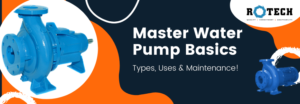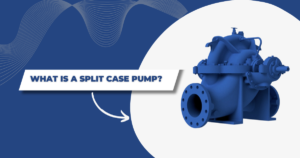Acid pumps are essential components in a variety of industrial processes and applications, where they play a crucial role in moving corrosive liquids and liquids with abrasive solids. In this comprehensive guide, we’ll cover everything you need to know about acid pumps, including how they work, their different types, and their benefits and limitations.
What are Acid Pumps?
Acid pumps are pumps designed to handle corrosive and abrasive liquids that would damage or destroy regular pumps. These pumps are made of materials that can withstand the harsh chemical environment, such as stainless steel, duplex steels, and often plastic based polymers. The materials used in the construction of acid pumps depend on the type of liquid being pumped and the concentration of the corrosive material.
How do Acid Pumps Work?
Acid pumps work in much the same way as other pumps, using a rotating component to generate flow and pressure. The rotating component, typically an impeller or rotor, creates a flow by sucking the fluid into the inlet and expelling it out the outlet. In an acid pump, the rotating component is made of materials that can withstand the corrosive liquid being pumped.
Types of Acid Pumps
There are several different types of acid pumps, each with its own unique design and features. Some of the most common types of acid pumps include:
Centrifugal Acid Pumps
Centrifugal acid pumps are the most common type of acid pump and work by using a rotating impeller to generate flow and pressure. They are typically used for lower flow rates and lower pressures and are best suited for pumping liquids with a low concentration of corrosive material.
Diaphragm Acid Pumps
Diaphragm acid pumps are designed for higher pressure applications and are ideal for pumping liquids with a high concentration of corrosive material. They work by using a flexible diaphragm to create pressure, which moves the liquid through the pump.
Magnetic Drive Acid Pumps
Magnetic drive acid pumps use a magnetic coupling to drive the pump rotor, eliminating the need for a direct mechanical connection. This makes them ideal for use in hazardous environments, as there is no risk of leakage or contamination.
Peristaltic Acid Pumps
Peristaltic acid pumps are ideal for pumping liquids with solids and are often used in the food and beverage industry. They work by using a flexible hose or tube that is pinched closed by rollers, creating pressure that moves the fluid through the pump.
Benefits and Limitations of Acid Pumps
Acid pumps offer a number of benefits, including:
- Increased efficiency and reliability compared to other types of pumps
- Ability to handle corrosive liquids without being damaged
- Increased safety, as there is no risk of leakage or contamination
However, there are also some limitations to consider when using acid pumps, including:
- Higher cost compared to other types of pumps
- Limited flow rate and pressure capabilities
- Maintenance requirements to ensure the pumps continue to function properly
Conclusion
Acid pumps are essential components in a variety of industrial processes and applications, where they play a crucial role in moving corrosive liquids and liquids with abrasive solids. Understanding the different types of acid pumps, their benefits and limitations, and how they work can help you make an informed decision when choosing an acid pump for your needs. Whether you’re looking for increased efficiency, reliability, or safety, there is sure to be an acid pump that is right for you
Recent Posts

A Comprehensive Guide to Types of Water Pumps and Their Applications
Introduction Water pumps are indispensable

The Complete Guide to Water Pumps: Types, Uses, and Maintenance
Water is life, and the

Comprehensive Guide to Split Case Pumps
Split case pumps are a

